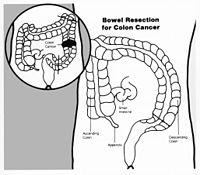
Photo from wikipedia
Purpose For patients with stage III (N2) non–small cell lung cancer (NSCLC) treated with surgical resection, postoperative chemotherapy improves overall survival (OS), but the role of postoperative radiation therapy (PORT)… Click to show full abstract
Purpose For patients with stage III (N2) non–small cell lung cancer (NSCLC) treated with surgical resection, postoperative chemotherapy improves overall survival (OS), but the role of postoperative radiation therapy (PORT) is controversial. The purpose of this study was to evaluate risk factors for local-regional recurrence and to evaluate the impact of PORT on local-regional control (LRC) and OS in a modern series of patients with surgically resected stage III (N2) NSCLC. Methods and materials A retrospective review was performed of patients with Stage III (N2) NSCLC who underwent curative intent resection at our institution between February 1999 and January 2012. OS, LRC, and metastasis-free survival were estimated from the date of surgery using the Kaplan Meier method. Results A total of 71 patients were included in the study. Patient median age was 63 years. Histology was adenocarcinoma in 69% of patients. Pretreatment positron emission tomography/computed tomography staging was performed for 90% of patients, and preoperative chemotherapy was administered in 23%. The rate of R0 resection was 96%. Forty-one patients (58%) received PORT and the median PORT dose was 50 Gy (range, 41.4-60 Gy). The median follow-up time for living patients was 5.0 years. Five-year OS for all patients was 66%. OS at 5 years for patients who received PORT compared with patients who did not receive PORT was 71% versus 60%, respectively (hazard ratio [HR], 0.61; 95% CI, 0.30-1.44; P = .28). LRC at 5 years for patients who received PORT compared with patients who did not receive PORT was 89% versus 76%, respectively (HR, 0.44; 95% CI, 0.13-1.45; P = .17). Factors associated with decreased LRC were male sex (P = .011) and primary tumor (pT) stage (pT3/4 vs. pT1/2, P = .006). Metastasis-free survival at 5 years for patients who received PORT compared with those who did not receive PORT was 62% versus 63%, respectively (HR, 1.07; 95% CI, 0.51-2.40; P = .86). Conclusions In this modern series of patients with resected stage III (N2) NSCLC, patients who received PORT had higher rates of OS and LRC, but these differences were not statistically significant.
Journal Title: Advances in Radiation Oncology
Year Published: 2017
Link to full text (if available)
Share on Social Media: Sign Up to like & get
recommendations!